Nine Innings: Deciding the NL East, the Rise of Position Players Pitching and October X-Factors
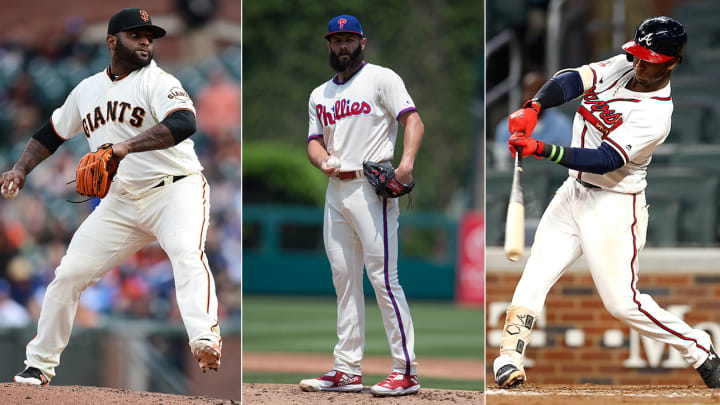
HASHING OUT THE NL EAST RACE BETWEEN THE BRAVES AND PHILLIES
By Tom Verducci
Twenty weeks down and seven to go, and still there is virtually no separation between the Atlanta Braves and Philadelphia Phillies in the NL East. They have ranked 1-2 in the division in some order for 53 consecutive days. And one of them, if not both, could jump from 90 losses last year to 90 wins and the playoffs this year.
The Braves and the Phillies are the two biggest surprises in baseball. But which one will end up as the biggest surprise and win the division? Here is a head-to-head comparison, which can provide us with the likely answer.
Starting Pitching
It doesn’t get much closer than this. The Phillies have Aaron Nola pitching like an ace and Jake Arrieta rediscovering his slider in recent weeks. One warning: Nola, Nick Pivetta and Vince Velasquez are all on target to throw a career-high in innings.
Anibel Sanchez was the Braves’ hottest pitcher until landing on the DL. Mike Foltynewicz, Sean Newcomb and Julio Teheran are solid. Kevin Gausman is the wild card: an émigré from Baltimore who might be Arrieta 2.0 with his change of scenery to the NL and the quality of his stuff. In his second start for the Braves, Gausman junked the windup Friday and threw an eight-inning gem exclusively out of the stretch. It wouldn’t have happened in Baltimore.
Take a look at the comparison of the teams’ starters:
| W-L | ERA | K/9 |
|---|---|---|---|
Phillies | 45-34 | 3.66 | 8.8 |
Braves | 45-31 | 3.59 | 8.7 |
Relief Pitching
Braves GM Alex Anthopoulos has been active trying to prop up the Atlanta bullpen by trading for Brad Brach and Jonny Venters. But this bullpen still is short on experience and is the most vulnerable part of the club. Rookie A.J. Minter looks like he will close down the stretch given the continued shoulder issues of Arodys Vizcaino. The Braves’ relievers are 18-20 with a 4.19 ERA, ranking 10th in the league. They’ve issued the fourth-most walks. It is not a championship bullpen.
The Phillies are a bit better, but also lack depth and experience. Closer Seranthony Dominguez has a 1.86 ERA in save situations with electric stuff. The 'pen is 20-17 with a 3.83 ERA—a middle-of-the-pack unit.
Edge: Phillies
Defense
The Braves are loaded with premium defenders: three shortstop-quality defenders in the infield—Johan Camargo, Dansby Swanson and Ozzie Albies—Freddie Freeman at first base and Ender Inciarte in centerfield. The unit is the best in the league by defensive efficiency and fourth best by Defensive Runs Saved.
Philadelphia is not a good defensive team by any measure. It ranks 10th in defensive efficiency and last in defensive runs saved.
Edge: Braves
Report: Alex Rodriguez and Cubs Manager Joe Maddon Get in 'Heated Argument'
Offense
The Braves have more ways to beat you. Philadelphia is the worst team in the league at making contact and is in the bottom five at taking the extra base. It relies heavily on walks and home runs.
Atlanta is the best team in the league at making contact, is far superior with runners in scoring position and is better at running the bases. Add it up and the Braves are second in the league in runs per game and Philadelphia is 11th.
Edge: Braves
Schedule
The Braves have the tougher road. They have more games left against winning teams (33) than do the Phillies (25), who benefit from playing 17 of their final 42 against the Mets and Marlins.
If the race comes down to the final 11 days—and why wouldn’t it? Neither team is good enough to pull away—the Braves and Phillies play one another seven times. The first four of those head-to-head games are in Atlanta. In between head-to-head series, the Phillies have to go to Colorado (their only games remaining out of the Eastern time zone) while the Braves get a day off and three games in New York.
Edge: Phillies.
Verdict: Phillies. The decisive edges are having the better bullpen and the final series at home.
BEST THING I SAW: RAMON LAUREANO'S SUPERHUMAN 321-FOOT THROW
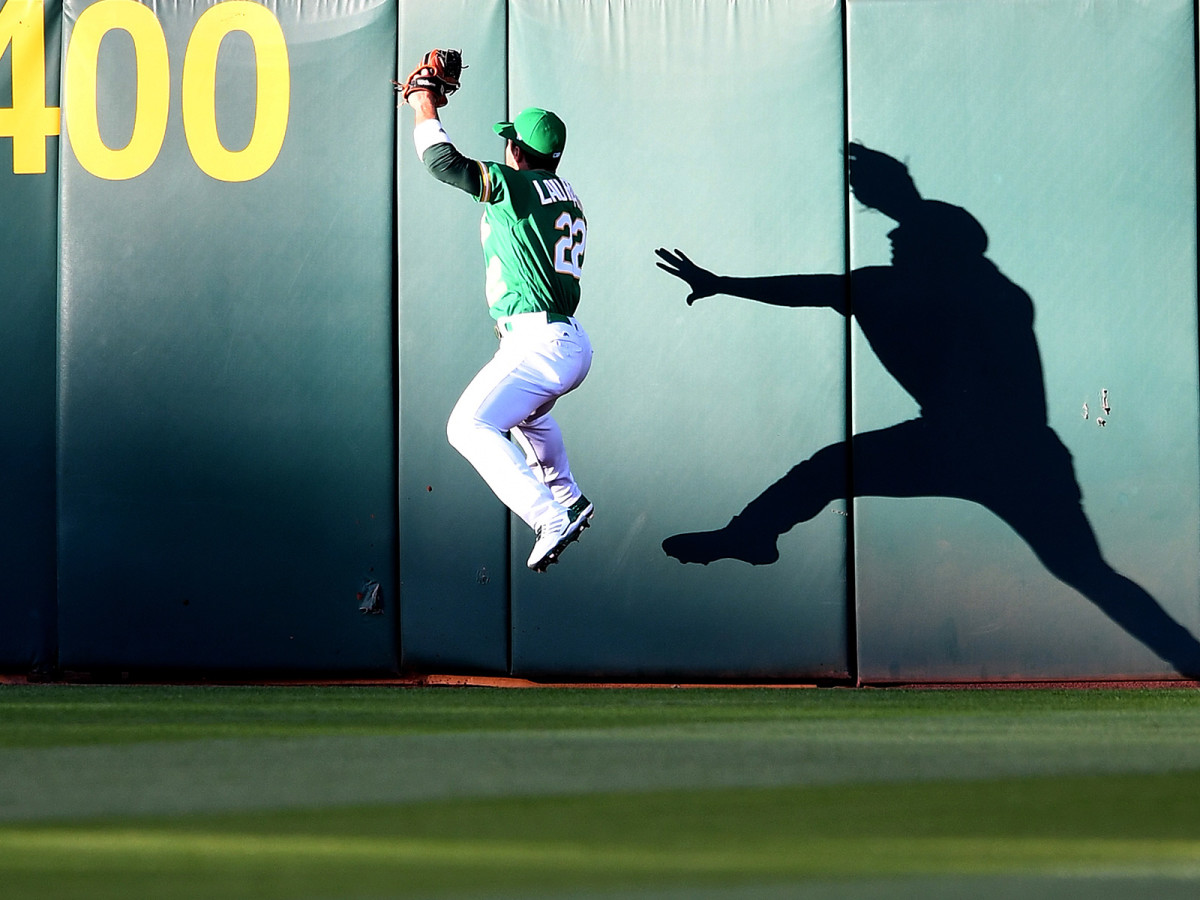
By Jon Tayler
Invariably, the process of trying to describe a great baseball play—particularly one that springs out of nowhere—is that you risk sounding tremendously stupid. It’s twofold: It’s hard to capture in words something visually stunning, and there’s a tendency to make it dramatic—a feeling to match the moment. It can all come off a little ridiculous; summing up a highlight-reel act can hew perilously close to the classic Onion headline, “Five Or Six Dudes Jump Out Of Nowhere And Just Start Whaling On This One Guy.”
But then, this play—this obscene, glorious, soul-cracking throw from A’s rookie centerfielder Ramon Laureano, whose name sounds like a minor telenovela actor—is the baseball equivalent of a bunch of guys bouncing out of the bushes and throwing haymakers on some unsuspecting fool. This is a thunderbolt that shocks you out of a stupor, that livens up late-night West Coast baseball and momentarily turns your Twitter timeline into the same still over and over.
You'll fall in love with Ramón Laureano's speed, but you'll want to marry Ramón Laureano's arm. W O W ! pic.twitter.com/3dRaPkL249
— Oakland A's (@Athletics) August 12, 2018
Here, now watch it from the even better centerfield angle.
— A's on NBCS (@NBCSAthletics) August 12, 2018
In baseball’s odd parlance, we say that Laureano has a hose on him. In less euphemistic terms, we dub that a cannon. Either way, it’s an absurd throw—321 feet on the fly, perfectly on target, dumbfounding everyone involved. It’s not just the best thing you or I or anyone else saw this week; it’s one of the best things we’ll see all year. It makes you want to rush home and tell your friends. Like those dudes out of nowhere, it’s hard to believe—or explain.
EMPTYING THE NOTEBOOK: FIVE OBSERVATIONS FROM WATCHING THE BRAVES-BREWERS SERIES
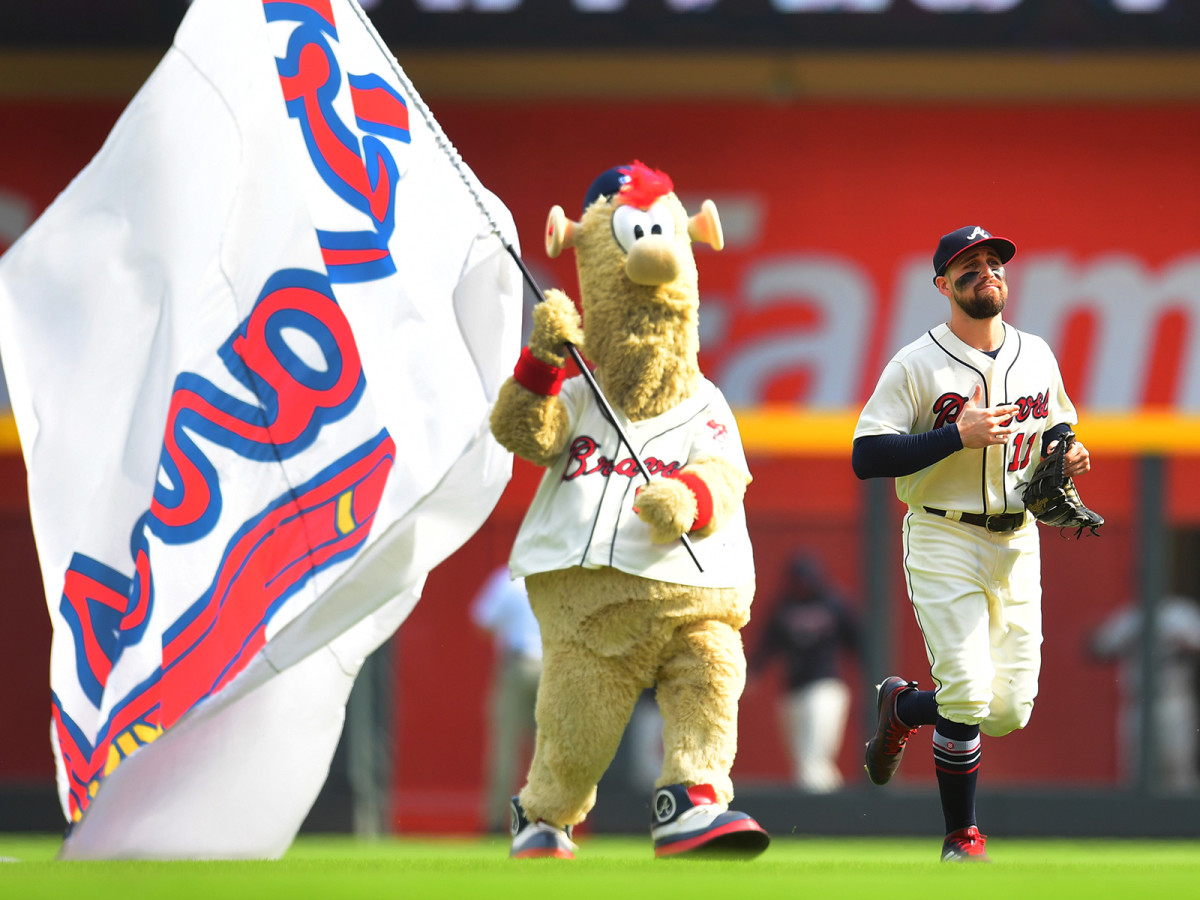
By Emma Baccellieri
The National League’s playoff picture remains a tangle of possibilities, with no division lead bigger than three games and five teams clustering around the pair of wild card berths. Right in the thick of all that are the Brewers and Braves, who played a three-game series this weekend. Atlanta took two of those to stay tied with Philadelphia for the lead in the NL East, while Milwaukee is still holding on to the wild card. Here, five tidbits from the series…
• Atlanta’s deadline upgrades were modest, with most of their activity coming from the everything-must-go sale in Baltimore. The Braves picked up the pitching trio of Kevin Gausman, Brad Brach and Darren O’Day, which are, respectively, two potentially intriguing reclamation projects and one reliever out for the season with a hamstring injury. Gausman, in particular, could turn out to be a notable piece here. The 27-year-old has long shown compelling flashes of talent—but you only call it a flash when it isn’t consistent enough to be a light. On Friday night, though, he looked like he’d flipped on the switch. In his second start as a Brave, he threw eight innings of one-run ball, with eight strikeouts and no walks. Especially encouraging? His Achilles heel in Baltimore was the home run, but since the trade, he’s yet to allow a dinger.
Willie Mays's Message to Hall of Fame Voters: Get Barry Bonds in
• Ask teammates what they find most impressive about Ozzie Albies, and the same answer will surface repeatedly. The 21-year-old phenom has no shortage of impressive qualities, but the one that’s consistently singled out is a knack for identifying and making necessary adjustments to his game. A bit of that talent was on display this weekend. If Albies has one clear weakness, it’s his inability to work a walk. Entering this series, his walk percentage for the season was less than 4%. In his last 40 games, he’d drawn just two free passes. On Friday night alone, though? He walked three times. Of course, that didn’t happen in a vacuum—two of the three came from an erratic Freddy Peralta, whose start lasted just three innings—but the fact that it happened at all is still notable. It’s something that you wouldn’t have seen a few months ago from Albies, who had never before walked more than once in a single game, let alone thrice.
• Asked what his preseason expectations were for Charlie Culberson, Brian Snitker simply said, “I didn’t have any.” The manager didn’t mean it as an insult, he explained, he just… hadn’t had any, which only makes sense in the case of a utility guy who’s been bouncing around the league. Anyone who did set expectations for Culberson, though, has now seen them blown out of the water. The 29-year-old has earned more than twice as many plate appearances this year as he had in the past three seasons combined, and he’s been making them count. For the first time, Culberson is a league-average hitter—and then some. His .821 OPS is a career-best, and lately, he’s been even better, with a 1.097 OPS since the All-Star Break.
Evaluating the Sad Decline of Félix Hernández, Who Is Now a Part of the Mariners' Bullpen
• The Brewers bullpen has made headlines for the dominance of Josh Hader and Jeremy Jeffress, but there’s a proverbial sore thumb here in the continued struggle of Corey Knebel. On Sunday, he made his first appearance since a four-run meltdown earlier this week against San Diego. Here, he was certainly better than that... but that’s not exactly a high bar. After getting two quick outs, he allowed back-to-back doubles that caused a run to score.
• In 11 games since the trade deadline, Milwaukee has used six different infield configurations, with three different attempts in the three games of this series alone. In terms of defensive prowess, one alignment stood out from the pack here: Sunday’s set-up with Jonathan Schoop at second, Hernan Perez at short and Mike Moustakas at third. But as clean as the defense looked, that configuration meant leaving Travis Shaw—and, most crucially, Shaw’s bat—on the bench. Therein lies the question this team has been battling lately. By using the deadline to acquire both Moustakas and Schoop, the front office embraced a strategy of “dingers first, defense second.” That’s meant using Shaw to second base, which he’d scarcely ever played before this month, and Schoop at shortstop, where he has limited experience, and scrambling everyone around the diamond on a semi-regular basis. It hasn’t necessarily looked pretty—in the first week and a half of this infield arrangement, the team committed six errors—but it also hasn’t been a complete disaster, and, regardless, it’s still far too early to make any hard-and-fast judgments here.
ROUNDTABLE: WILL POSITION PLAYERS PITCHING BECOME EVEN MORE PREVALENT IN THE YEARS TO COME?
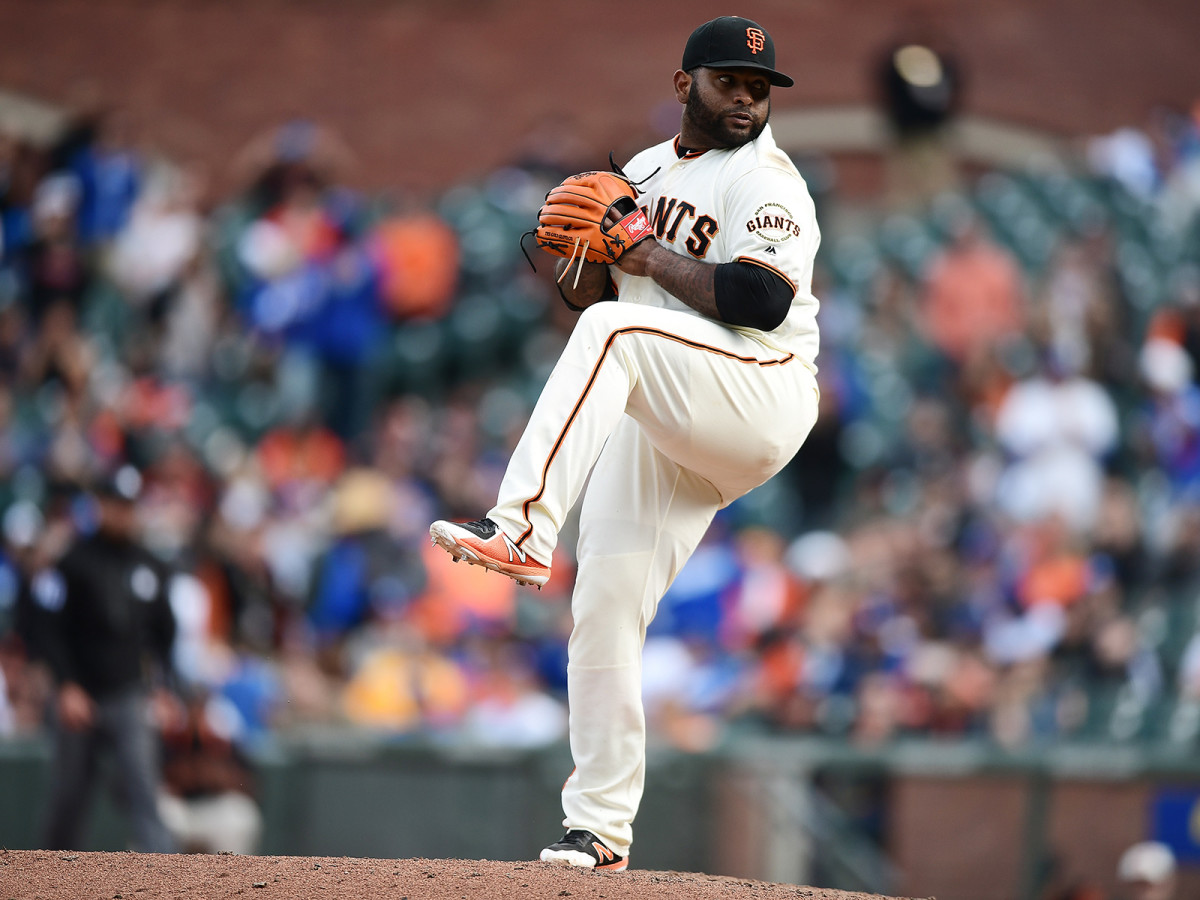
Emma Baccellieri:Yes. Baseball has been laying the groundwork for this over the last several seasons, and given some of the game’s recent changes, it only makes sense. As starters throw fewer and fewer pitches each year, the bullpen’s role has grown more crucial. That, of course, is leading to an increased emphasis on relief depth and availability—and putting position players on the mound is a legitimate strategy for managers to preserve some of that depth. Sure, the whole thing feels a bit less fun when it comes across as a ruthless tactical move rather than a silly little quirk. But it’s probably best to get used to that, because the strategy only stands to grow more popular.
Gabriel Baumgaertner: The rise in relievers making starts and position players making relief appearances means simply that managers don’t want to waste their best arms in meaningless situations. Want to keep hitters off-balance all game? A parade of relievers won’t allow any hitter to feel familiar. Want to get a game over with? Throw a position player instead of a relief pitcher. The entertainment factor of position players pitching is highly elastic. Pablo Sandoval piping 90 MPH fastballs and setting the Dodgers down 1-2-3 was one of the season’s most amusing moments. Mets infielder Jose Reyes throwing 46 pitches in a 25–4 loss to the Nationals felt more pathetic than amusing (and worst, dangerous).
The most intriguing use of a position player to pitch this year was when the Dodgers entered utilityman Enrique Hernandez in the 16th inning of a 4–4 tie against the Phillies. Philadelphia infielder Trevor Plouffe hit a walk-off three-run homer, prompting many to accuse Dodgers manager Dave Roberts of surrendering. Roberts’ decision-making was understandably; why burn another pitcher in a game with no end in sight (the two teams also had to play the next afternoon). The problem with that decision? The Dodgers are in the thick of a division and wild card race. One loss could derail their postseason dreams, at which point the decision to pitch Hernandez may look shortsighted.
Teams don’t want to throw position players, but it’s a good idea during blowouts. With the amount of work that pitchers endure over the course of a season and the staggering injury rate that comes with the position, there’s nothing wrong with throwing a position player—it’s just not aesthetically pleasing.
Do the Red Sox Have a Legitimate Chance At Breaking the Single-Season Wins Record?
Michael Beller: We may have seen a surge in position players pitching this season, but I don’t think it’s a sign of things to come. It’s certainly possible that this season represents a new normal, but I don’t think it’ll grow beyond the level it has gotten to this year. With every team carrying deep bullpens, there isn’t really a huge need for it. There’s also the injury risk that, while minimal, will dissuade teams from throwing a position player out there in typical circumstances. We may see teams lean on position players on either side of a blowout more than we were used to before this season, but I don’t think what has happened this year is a sign that things are about to take off.
Connor Grossman: Baseball, like many other things in life, is cyclical. It's consumed by fads, much like fashion, technology (who wouldn't want a 3D TV, right?), cars and virtually any other industry. Position players pitching is both practical and entertaining to watch. Is it going to continue its unprecedented rise throughout the game? Probably for a few years. But unfortunately it only takes one injury for organizations to comletely shift their thinking. One alteration to the CBA. One moment can completely tip baseball's latest trend on its head.
Baseball will deviate back to the "norm" eventually, with fewer position players pitching than we're seeing right now. But enjoy the harmless fun while it lasts.
Jon Tayler: It’s hard to imagine this one-time phenomenon and now regular reality becoming somehow more prevalent. We haven’t just seen a record number of backup catchers, utility infielders and fourth outfielders out there tossing 80-mph fastballs; we’ve obliterated the old standards for it. Hardly a day goes by without some club or another sacrificing a position player (and his dignity) to save a reliever whose bullets are needed for bigger and better targets.
What Teams Are Intriguing Value Bets to Win the World Series?
But unless MLB teams expand bench roles to include guys who can conceivably pitch a few innings a week and also take at-bats—essentially returning the two-way player on a limited scale—I don’t think we’ll see this more often. More likely is, in the next CBA, an agreement to expand rosters by a spot, allowing clubs to carry more relievers. Yes, already engorged bullpens may grow larger. But apparently, the only other solution is for the Matt Davidsons of the world to carry the load. That hardly seems fair, especially from a labor perspective.
Tom Verducci: You can expect to see more position players on the mound—as long as MLB doesn’t make the insanely bad decision of expanding rosters to turn the game over even more to relief pitchers. The Phillies were actually ahead of the curve by giving some spring training bullpen sessions to infielder Pedro Florimon. The idea was to get his body used to throwing off the slope. Expect to see more guys “trained” to pick up outs in very low leverage situations
It’s not embarrassing. It’s not bad for baseball. It’s sound strategy. Brewers manager Craig Counsell pointed to a game he won this year because he used two position players in a blowout. Counsell used Hernan Perez and Erik Kratz for six outs in a 21-5 loss to the Dodgers. Counsell said they won the next night in a walk-off, 5-3, because he had relievers Dan Jennings and Corbin Burnes fresh.
DETERMINING AN OCTOBER X-FACTOR FOR EACH AL CONTENDER
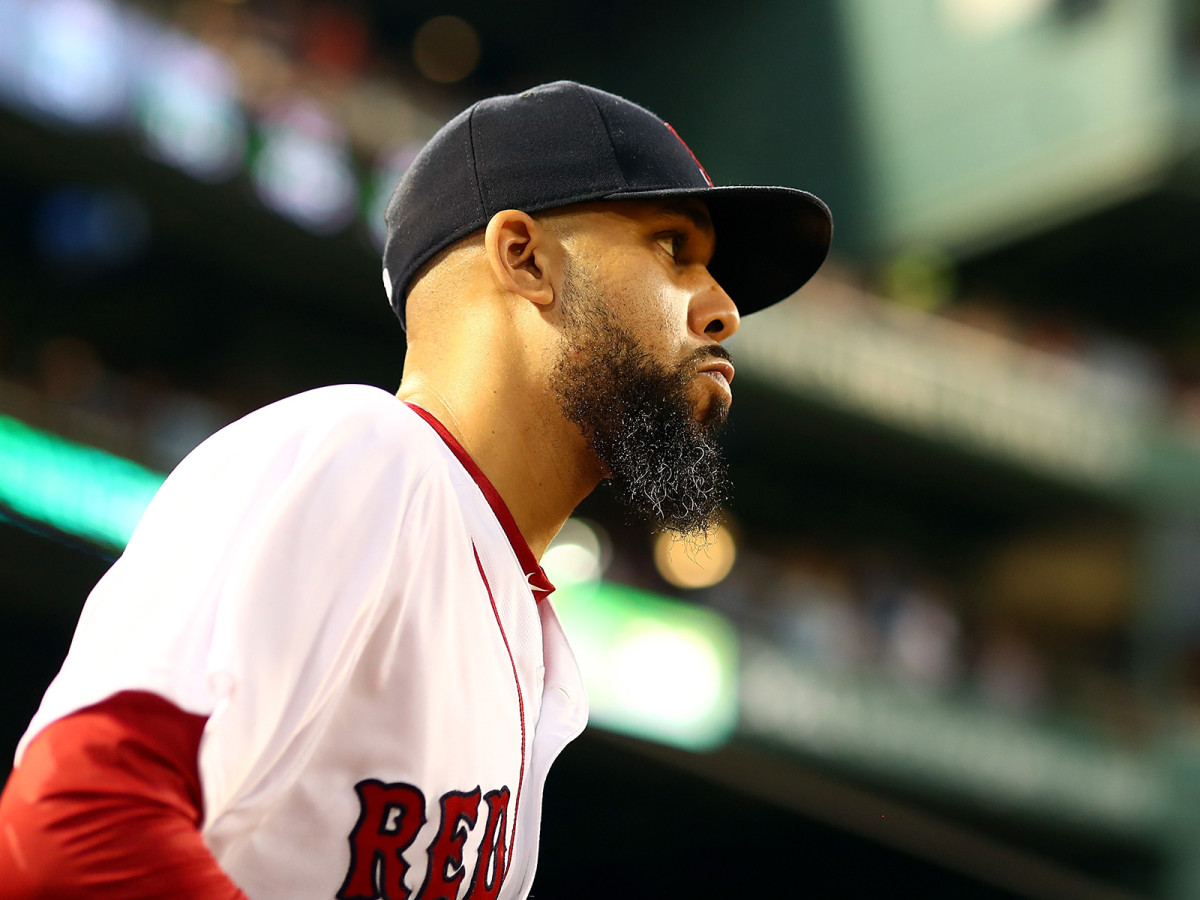
By Michael Beller
Last week in Nine Innings we considered X-factors for NL postseason contenders. This week we’ll do the same in the AL, but with a twist. The AL doesn’t have nearly as many contenders as the NL, with the Red Sox and Indians all but guaranteed to win their divisions, and the Yankees and Astros on solid ground.
As such, where the NL entry focused on X-factors to just get to the postseason, the AL will look at the players who could key a deep October run.
Boston Red Sox: David Price
The Red Sox are going to hit. That won’t be a concern. If they’re going to turn what’s shaping up to be a historic regular season into a special postseason, the pitching is going to have to come along, as well. Chris Sale will do his thing, but who will step up behind him as a reliable No. 2?
Price is in his best stretch of the season, having posted five straight quality starts. The Red Sox don’t need Price to throw it back to his Cy Young days, but if he can maintain his current pace into the postseason, he’ll give the Red Sox the No. 2 starter they’ll need to get through the AL playoff gauntlet.
New York Yankees: Aaron Judge
Judge will be out for at least a few more weeks because of his fractured right wrist, but when he returns the Yankees will need him to be the engine of the offense that he was before going on the DL. Judge, who’s slashing .285/.398/.548, was playing to a 162-game pace of 42 homers, 32 doubles and 100 RBIs. As good as the Yankees’ offense has been, Judge is one of the few who can carry it through an entire playoff series or two.
Houston Astros: Charlie Morton
If the Astros are going to be the first repeat World Series champions since the Yankees, they’ll likely need George Springer and Carlos Correa to hit more like their 2017 selves. Yet it’s Houston’s rotation that provides it the surest path back to the World Series. With Gerrit Cole and Justin Verlander as the headliners, the Astros will likely have the best pair of starters in the postseason. If Morton’s at the height of his game, they’ll have the best top three, too, and that’s the sort of thing that can take complete control of a playoff series.
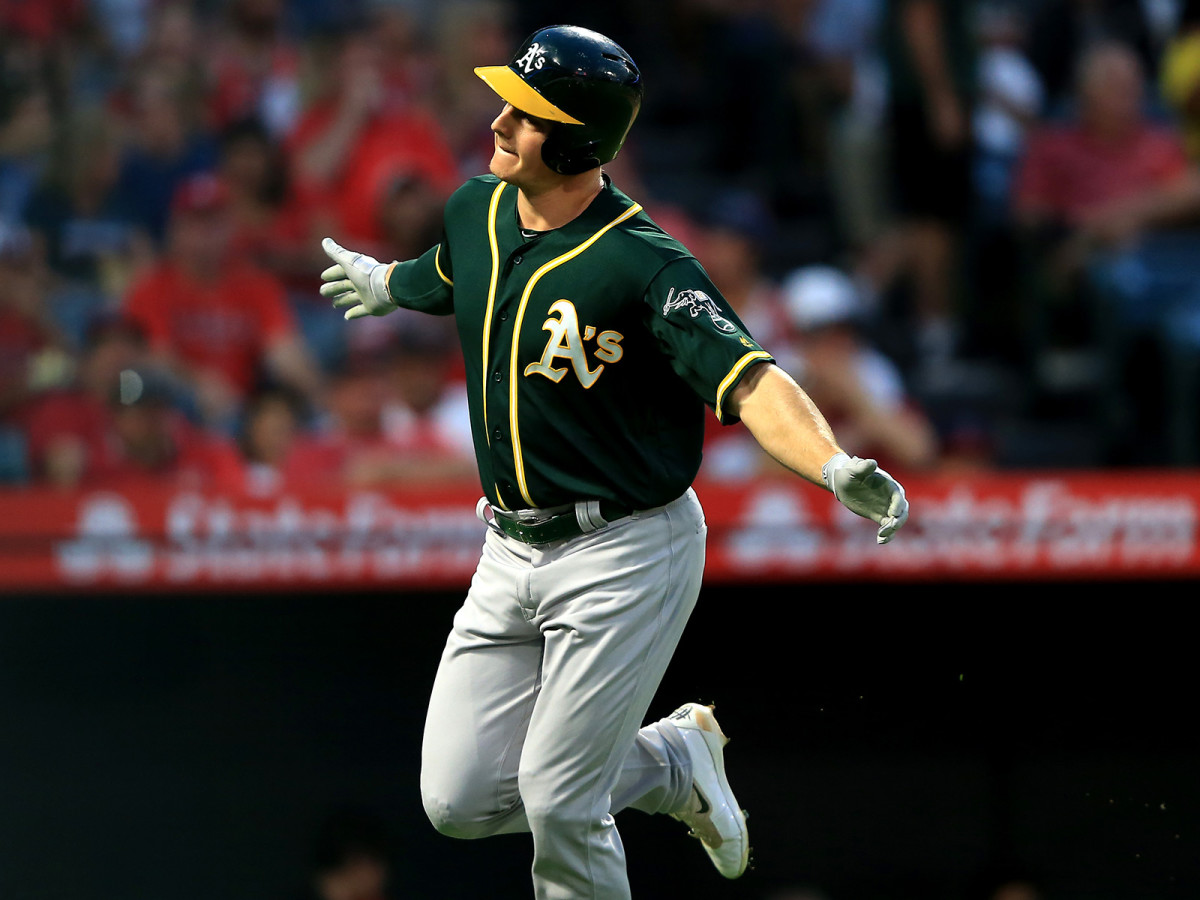
Oakland A’s: Matt Chapman
The A’s suddenly find themselves just 2 1/2 games behind the Astros in the West, making a division title a realistic possibility. Should they get to the postseason, their bullpen, which ranks fourth in the majors in ERA and sixth in fWAR, will need to be a real weapon backing up a strong offense and soft rotation. Chapman, however, is the singular key player because of what he can do for the offense. He’s second on the team with a .370 wOBA, trailing only Khris Davis. Davis is an elite power hitter, and Matt Olson and Jed Lowrie both have plenty of pop and on-base skills, but Chapman is arguably the team’s most complete hitter.
Seattle Mariners: James Paxton
Paxton leads the Mariners in fWAR and is the one bankable pitcher in the rotation. They’ve gotten enough from Marco Gonzales, Mike Leake and Wade LeBlanc, but Paxton is the one guy they can realistically hope delivers a gem every five days. If the Mariners are going to run down a wild card spot and end the longest playoff drought in professional sports, they’ll need no wasted outings from Paxton the rest of the way.
Cleveland Indians: Jose Ramirez/Francisco Lindor
The Indians are likely to enter the postseason with the worst record among qualifiers in the AL, but they’re in the right division. That’s all that matters. Corey Kluber and Trevor Bauer will give the Indians the pitching to compete in every series, but Ramirez and Lindor give them the sort of star power to match up with the Astros, Red Sox and Yankees. With Ramirez possibly on the inside track for the AL MVP and Lindor tracking toward another top-five finish, the Indians may have the best 1-2 punch at the plate in October.
BREAKING DOWN ADAM ENGEL'S TRIFECTA OF HOME RUN ROBBERIES
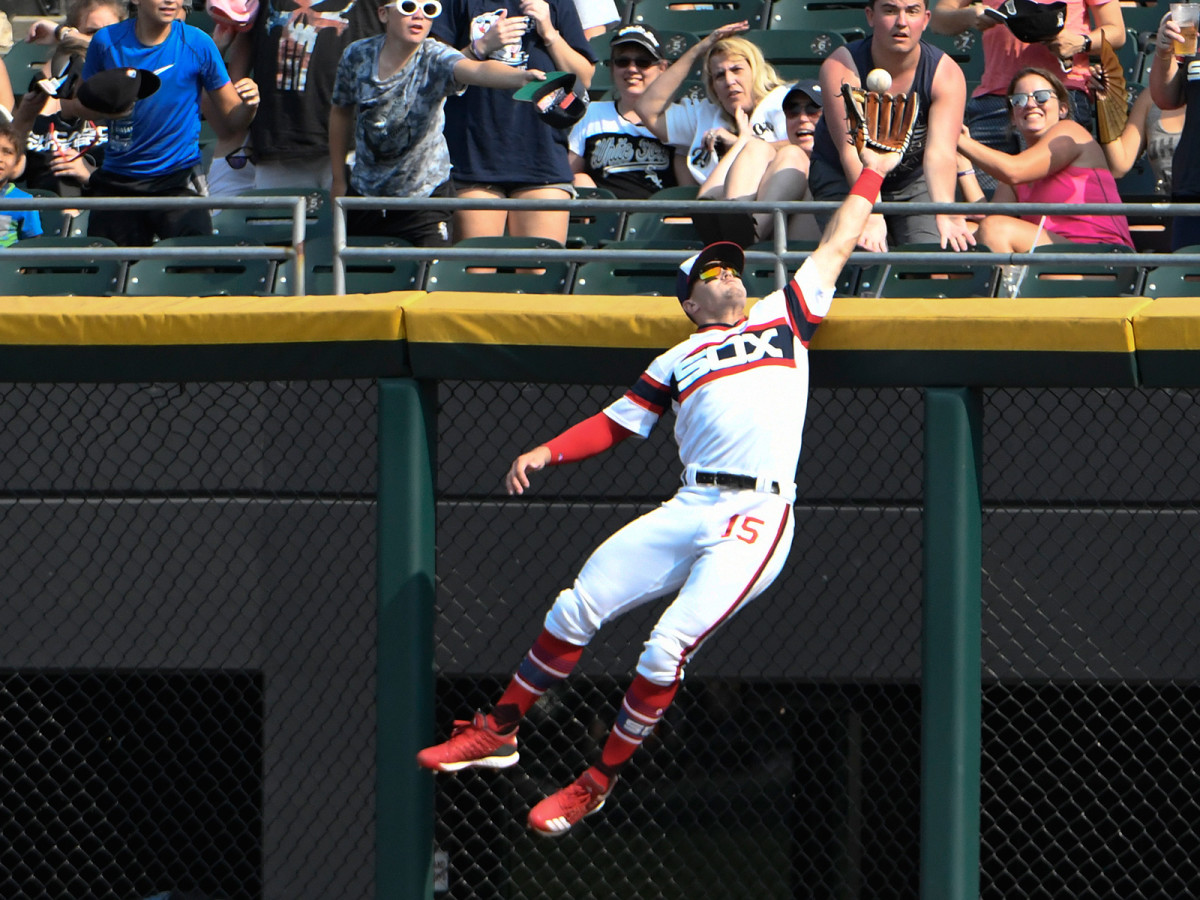
By Gabriel Baumgaertner
Even White Sox fans don’t want to watch the White Sox these days, but centerfielder Adam Engel rose from relative obscurity into a staple on the highlight reel in the span of just one week. MLB is flush with spectacularly athletic defensive outfielders—the Blue Jays’ Kevin Pillar and the Reds' Billy Hamilton are good examples—and now Engel, a second-year outfielder, deserves mentioning beside them. Engel submitted three legitimate home run robberies over a seven-day span, each a textbook example of route-running, timing and leaping ability.
First, he denied Yankees first baseman Greg Bird.
“Nah.” – Adam Engel pic.twitter.com/0I6OUEP3qW
— MLB (@MLB) August 7, 2018
It’s hard to pick the best part of this catch: the angle he takes toward the ball is so precise that he even has time to wait and determine when he needs to time his jump. Once he jumps, Engel hangs in the air (you’ll notice this trend on all three catches) and reaches his wrist over the wall to all but pull back Bird’s homer. It’s a magnificent play.
The next night, his victim was Yankees catcher Kyle Higashioka.
We told you, he's Mr. Steal Your Dinger! https://t.co/ysOGOX5qIJ
— Chicago White Sox (@whitesox) August 8, 2018
This one is all about the hangtime. Higashioka hit this ball hard, but he hit it particularly high. Engel tracks it perfectly off the bat and all but camps under it before completing the hardest part of the catch: when to jump. This ball is hit so high that there’s a distinct chance that Engel could jump too early and land before the ball does. Or he jumps too late and the ball lands before the ball lands before he reaches it. Instead, Engel leaps, preserves his airtime with his mid-air leg kick (a standard on all three catches), and pulls back what should have been Higashioka’s fourth homer of the season.
And then, there’s his eye-popping takeaway of Indians first baseman Yonder Alonso.
ADAM ENGEL‘S THIRD ROBBERY OF THE HOMESTAND!
— Sox On 35th (@SoxOn35th) August 12, 2018
pic.twitter.com/ilUzN85tVf
This one is the best of the lot. There’s not much to add except the bulging eyes emoji. The likelihood of timing this properly and bringing back a ball that cleared the wall by that distance is miniscule. For Engel, it was no problem. It will be one every top play list once the season ends.
So what if the White Sox are a bore? Adam Engel is the kind of player you tune into see.
WHAT'S ON TAP: THE EVER-INTRIGUING AL WEST PROVIDES OUR MUST-WATCH SERIES
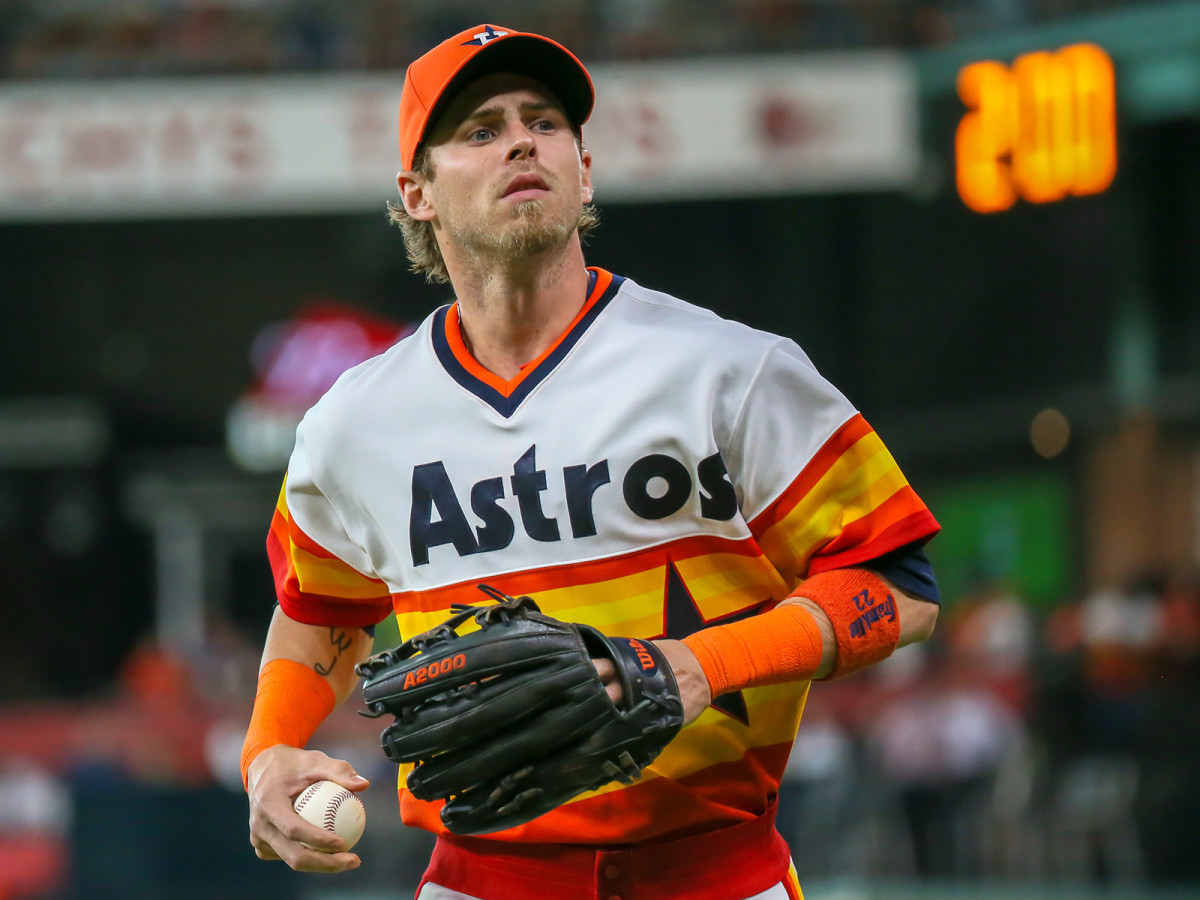
By Michael Beller
Hitter to Watch: Ronald Acuña Jr., Braves
Acuña homered in the final two games of Atlanta’s series with Milwaukee over the weekend, and has now left the yard in four of his last five games. The Braves enter this week tied with the Phillies atop the NL East and will play eight games in seven days, starting with a doubleheader against the Marlins on Monday. Acuña is hitting .271/.328/.522 with 15 homers, 16 doubles and 34 RBI this season.
Pitcher to Watch: Patrick Corbin, Diamondbacks
Corbin was excellent in his last trip to the mound, tossing 7 1/3 shutout innings while striking out nine in a win over the Phillies. The Diamondbacks begin this week one game ahead of the Dodgers in the NL West and have a real opportunity to get on a run with six games against a couple of last place teams in the Rangers and Padres. Corbin will start one of those games, facing the Rangers on Tuesday.
Matchup to Watch: Astros at A’s, Friday through Sunday
The A’s have steadily made up ground in the AL West all season, and could find themselves in first place at this time next week. They begin the week with a three-game series against the Mariners, who trail them by 1 1/2 games for the second wild card. After that, they’ll host the Astros, whose stranglehold on the division is loosening. The A’s trail the defending World Series champs by just 2 1/2 games, putting first place comfortably within striking distance. The Astros are on track to start Charlie Morton, Dallas Keuchel and Justin Verlander, while the A’s are slated to counter with Edwin Jackson, Trevor Cahill and Sean Manaea.
TWEETS OF THE WEEK
A spray chart of @BarryBonds' hits, from 2000-2007. We like the red dots. [via @darenw]#Bonds 25 | #SFGiants pic.twitter.com/FErGcgWhJX
— SFGiants (@SFGiants) August 11, 2018
When I saw Ramon Laureano's ridiculous throw from last night, my first thought beyond "wow" was of Yoenis Cespedes in that same ballpark.
— Andrew Simon (@AndrewSimonMLB) August 12, 2018
And sure enough ... pic.twitter.com/e3xGM5g9Pk
Hardest hit home runs recorded by @statcast since 2015
— Daren Willman (@darenw) August 10, 2018
Stanton 121.7 MPH
Judge 121.1
Judge 119.4
Stanton 119.3
Stanton 119.2
Stanton 118.7
Judge 118.6
Stanton 118.5
Judge 118.4
Judge 118.3
Stanton 118.2
Stanton 117.9
Stanton 117.9
First walk-off slam down 3 with 3 on 2 outs ... as a pinch-hitter in 39 years
— Mark Simon (@MarkASimonSays) August 13, 2018
Roger Freed (1979 Cardinals) had the last vs Astros. They actually play that call in the broadcast wing section of the Baseball Hall of Fame
Stop the presses. Mike Scioscia has a position player in to pitch for the 1st time ever.
— Sarah Langs (@SlangsOnSports) August 12, 2018
It goes back before Scioscia: The last Angels position player to pitch was Chili Davis on June 17, 1993. Every other team had done it at least once in that span entering today.
This guy is incredible pic.twitter.com/mZPHeh1RiY
— Phill (@MeekPhill_) August 8, 2018
FROM THE VAULT: HAPPY BIRTHDAY TO THE LATE, GREAT ROBERTO CLEMENTE
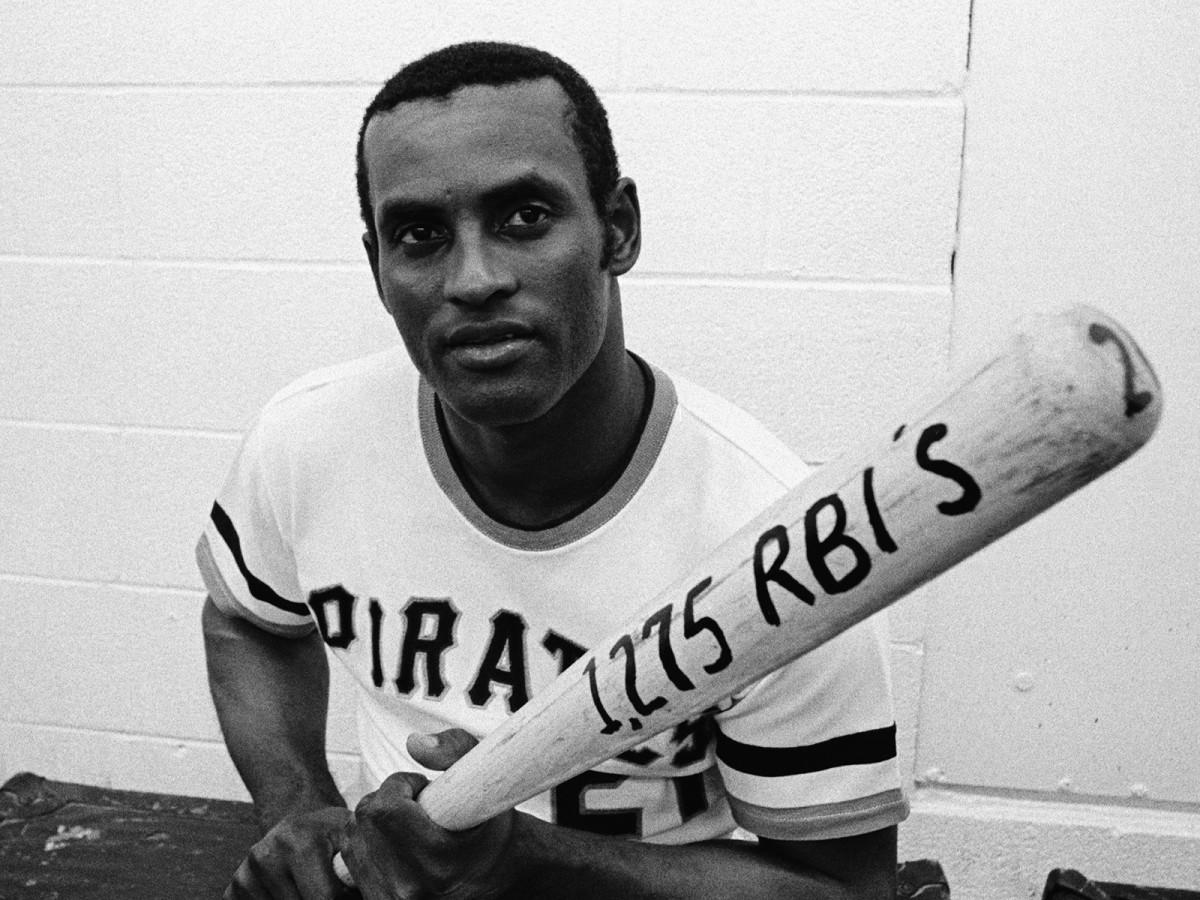
By Connor Grossman
One of baseball's immortal stars was born this week in 1934. This Saturday would have marked Roberto Clemente's 84th birthday. The legendary Pirates outfielder was killed in a plane crash on Dec. 31, 1972 while delivering relief supplies to earthquake victims in Nicaragua. Every once in a while, the idea is publicly floated for Major League Baseball to retire Clemente's No. 21 league-wide, a la Jackie Robinson.
That would be the ultimate tribute to the Hall of Famer, who was the subject of this terrific Steve Wulf piece from December 1992. Dive into Clemente's remarkable journey and come to understand why his death "immortalized him as a man greater than his game."
Enjoy the excerpt below and find the full piece here.
Clemente was appreciated by his teammates from the beginning. But it was not until late in his career that he finally received the public recognition he deserved. The Pirates made July 24, 1970, Roberto Clemente Night at Three Rivers Stadium, and a delegation from Puerto Rico brought a greeting bearing 300,000 signatures. In '71, Puerto Rican fans in New York presented him with a Cadillac. Pirate owner John Galbreath named a horse after him, and Roberto ended up winning the 1972 Epsom Derby.
Though Clemente would get his 3,000th hit in 1972, his crowning glory really came in the 1971 World Series. As they had been 11 years before, the Pirates were decided underdogs, this time to the Baltimore Orioles. Clemente put on some sort of clinic in every game: running, throwing, fielding, hitting. Says Brown, "During the '71 Series, people said to me, 'My God, does he always play like that?' And I said, 'Yes. Always. You're not seeing anything that we don't see day in and day out.' "
